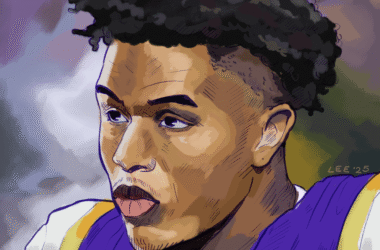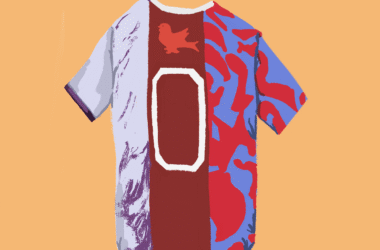Fans of the National Football League (NFL) watching the season opener between the Dallas Cowboys and Philadelphia Eagles on Sept. 4 may have been surprised to see a giant AI-generated baby staring back at them during a commercial break. More shocking, though, is the fact that it was an official NFL ad.
“Ride the Float” is the first advertisement in the NFL’s 2025 season kickoff campaign titled “You Better Believe It.” The ad is a minute long, takes place on an enormous parade float, and is chock-full of celebrity cameos and references to each of the NFL’s 32 teams. On paper, it is a promising concept, with potential to inspire the excitement typical of the football season’s debut. In practice, however, everything about the ad feels kind of… off.
Whenever a scene in “Ride the Float” includes a crowd of people, the group is composed of faceless humanoids moving in a way that can only be described as inorganic. A giant hovering bear in a Chicago uniform squirms artificially above the float. Most disturbing, though, is the baby. Decked out in full Las Vegas Raiders gear, the infant is so obviously AI-generated that it is easy to forget the ad was produced by a league whose teams are worth $7.1 billion USD on average.
In the NFL’s eyes, however, this strategy is right on target. In a press release accompanying the “You Better Believe It” campaign, Tim Ellis, the NFL’s Chief Marketing Officer, said, “Our fans are at the heart of this campaign — their joy, optimism and belief in what’s possible — and we embraced AI to bring them even closer to the game they love.”
According to the same press release, the ad’s blend of generative AI and computer-generated imagery was meant to give the NFL’s creative team “freedom to experiment.”
But for viewers, it does not feel like “Ride the Float” delivered anything new, or at least anything that could not have been achieved without AI. Fans’ opinions of the ad were dismal. Claiming that the league used generative AI for “innovation” is, frankly, insulting—watching the ad makes it clear that this was simply a cost-cutting measure. For a league with as much money and popular appeal as the NFL, such blatant dismissal of the idea that fans might want a final product with substance is significant. It implies to viewers that the NFL does not care about them—only about their bottom line.
Aside from its AI use, “Ride the Float” further signals how out of touch the NFL is. In a glossary accompanying the campaign’s press release, the league tries to define the word ‘aura.’ The best definition the NFL can come up with for this intangible, powerful vibe is, “Aura = something you want to have.” If the marketing team had taken five minutes to ask anyone familiar with popular culture at all, they would have come up with a much better definition.
The NFL’s out-of-touch problem extends further than the campaign. A beloved Sunday tradition for NFL fans is NFL RedZone, a seven-hour nonstop whiparound show covering every game of the day. For years, host Scott Hanson would start the show by saying, “Seven hours of commercial-free football starts now.” That promise has disappeared this year, as ads have begun to infiltrate the program, to the anger and frustration of many. The show is already only available by subscription—starting at $14.99 USD a month—so existing subscribers feel as if any return on investment is going away. As RedZone shows, the NFL is seeking any opportunity it can to monetize the love of the game, and everyone is expected to just accept it.
So, where should the NFL go from here? The answer is simple: They need to listen to their fans. At the end of the day, football supporters are the lifeblood of the league, as in any sport. With fans’ overwhelmingly negative responses to the NFL’s AI-generated ads and RedZone commercials, it is clear the NFL needs to rethink their priorities and start putting viewers first again.









